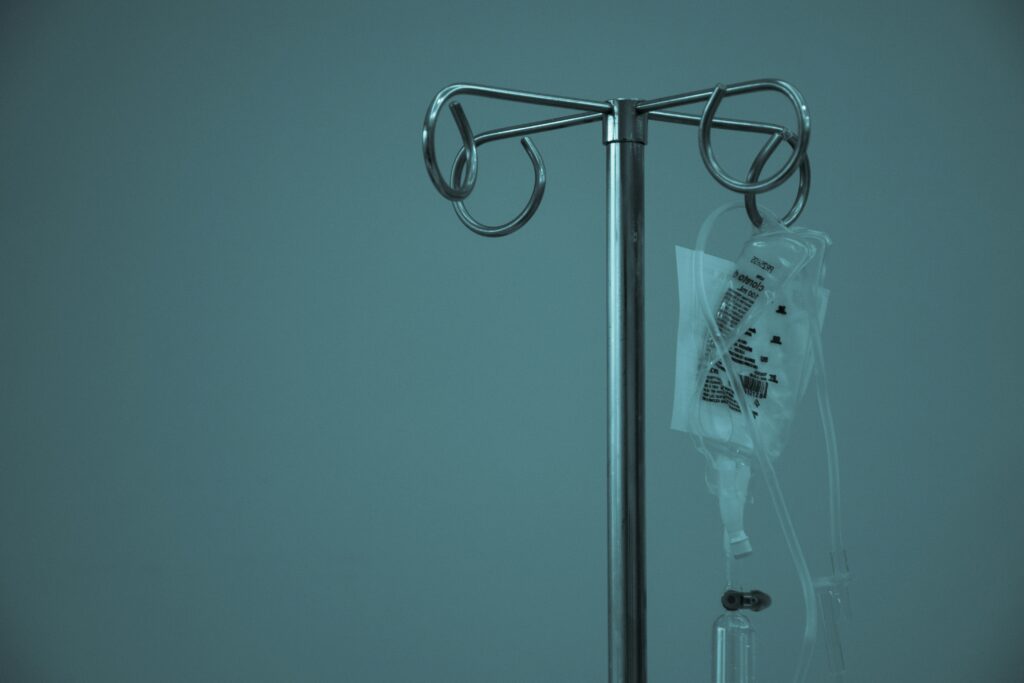Our niece Yona was staying with us for Shabbat. She felt fine when she arrived, but by Friday night she was coughing and asking for the Israeli equivalent of NyQuil.
And I started to freak out.
Ever since my first cancer treatment six years ago, my immune system has been a mess. Before then, I hardly got sick. Notwithstanding more chronic issues, which I have written about here at length, at least if I caught a cold or flu, it would typically be gone in two days.
No more.
In 2023, I was sick with lung infections for nine months. The doctors would treat it with antibiotics, I’d feel okay for a few weeks, and then it would come back.
To figure out what was going on, my doctor ordered a blood test to check my immunoglobulin (IG) levels.
Immunoglobulin is a protein that the immune system deploys to knock out infections. Low IG doesn’t show up on a standard blood test like one’s white or red blood count; you have to order it specially, something that didn’t happen until well into my seventh lung infection.
That’s when we learned that my IG was low. I simply didn’t have enough of it in my bloodstream to fight off these repeated infections efficiently.
More than that, my latest PET CT showed damage to the airways in my lungs from all those months of coughing and illness.
The official name for this latest ailment is bronchiectasis, a condition in which the damaged airways in the lungs widen, giving room for mucus to accumulate, creating a happy breeding ground for bacteria.
Unlike bronchitis, which typically resolves with no long-term effects, bronchiectasis is a permanent condition. Up to 500,000 people in the US have bronchiectasis.
To address this new diagnosis, my hematologist strongly urged me to get “intravenous immunoglobulin (IVIG) replacement therapy.” That’s where the patient receives IG extracted from the blood plasma of thousands of donors, thereby making up what one’s own body no longer (or in some cases never) produced.
The ostensible reason to start IVIG now was that my lungs needed time to recover from being hit by repeated infections.
Still, I resisted the recommendation for months.
The IG you get from the infusion lasts in your body for only about 30 days. Then you’re back to being unprotected. As a result, you have to take IG replacement therapy once a month – for the rest of your life.
It also takes hours to infuse. IVIG has a ton of potential side effects, from headaches and fever to the most serious: anaphylactic shock. So the nurses take it very slow, cautiously monitoring your reaction.
WHILE THE potential negative response to getting IVIG was worrying enough, it was the reality of having to go to the hospital for an IV every single month that threw me. It was a reminder that, even though my cancer has now been significantly diminished, I was still sick.
Wait, what? Talk about burying the lede!
The bispecific antibody immunotherapy (Mosunetuzemab), which I’ve been taking since January, appears to be working. Most of my tumors are gone, the PET CT showed.
“What are you going to worry about now?” my daughter, Merav, asked me upon hearing the good news.
“Oh, I’m sure I’ll think of something,” I said.
And then – boom, something new to feed my health anxiety – bronchiectasis – arrived.
“It seems like a good deal, if this could help you from getting sick all the time,” my therapist said, trying to tamp down my hesitancy.
It was well-considered advice: I truly despise being afraid whenever I’m in a public place where there might be viruses in the air – or in my own home, for that matter, when a guest becomes suddenly sick. And don’t get me started about all those kindergarten illnesses that come through the front door via the grandchildren with their perpetually runny noses.
IVIG won’t keep me from ever getting sick again. But instead of requiring weeks of antibiotics, maybe my body could clear an infection before it takes root. That would be a good deal.
There’s a strange comfort in the fact that it truly takes a village to extract the immunoglobulin needed for IVIG.
“My antibodies could be from anybody,” Gary Newton, who has been on IG replacement therapy for nearly a decade, told the Immune Deficiency Foundation website. “So, I feel a kind of kinship with everybody. Random folks I stand next to in a queue may well be the source of my antibodies.”
My worries turned out to be for naught. My first IVIG session went well – no side effects during the infusion, other than a headache that went away with Tylenol and a lot of water, and certainly no anaphylactic shock.
More important, the cough that I’d been suffering from during the previous month started to clear up – a sign that my newly donated antibodies were doing their job.
Going forward, I’ve asked Maccabi, my health provider, to approve a home treatment option called SCIG – for “subcutaneous IG.” It’s a shot you give yourself in the abdomen, thighs, buttocks, or arms.
Maccabi so far has rejected my request. Although it’s certainly more convenient for me as a patient, it’s also more expensive than IVIG. But I’ll keep pestering them.
I don’t love my latest status of being a “forever patient,” but now Yona can come back and I will, hopefully, not freak out quite as much.
I first wrote about my IVIG resistance for The Jerusalem Post.
Image of IV from marcelo-leal-6pcGTJDuf6M-unsplash


